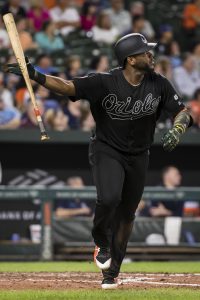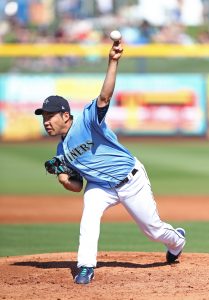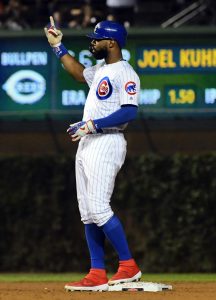Let’s start with the obvious: it was easy for the Nationals to select Stephen Strasburg and Bryce Harper with the first overall picks of the 2009 and 2010 drafts, respectively. And the team was quite fortunate that its low point in the standings coincided with the appearance of two slam-dunk talents.
But that doesn’t mean it was easy for new GM Mike Rizzo to get those two Scott Boras clients under contract. Both went down to the wire. Strasburg finally agreed to terms after talk of $50MM demands. Harper, who was chosen the day before Strasburg’s memorable MLB debut, also waited until just before midnight on deadline day to get his deal done. Both commanded record-setting numbers.
The trick there was less one of talent evaluation than of relationship management and negotiating prowess. Tamping down the costs, ensuring the players came into the organization, and avoiding any long-term tensions were the priorities. Mission accomplished.
But that’s not the extent of the Nats’ remarkable run of first-round success. Let’s consider the organization’s entire stretch of selections between 2009 and 2012. By that point, the team was enjoying enough success on the field that it punted its ensuing first-rounder through the qualifying offer system.
- 2009 (1st overall): Stephen Strasburg
- 2009 (10th overall): Drew Storen
- 2010 (1st overall): Bryce Harper
- 2011 (6th overall): Anthony Rendon
- 2011 (23rd overall): Alex Meyer
- 2011 (34th overall): Brian Goodwin
- 2012 (16th overall): Lucas Giolito
Every single one of those players reached the majors for at least three seasons, which is an accomplishment in and of itself. More importantly, those drafts have collectively produced four players that have turned in one or more superstar-level campaigns. While all the selections haven’t all shaken out quite as hoped, and the Nats have cashed some in via trade, the net is remarkable.
- Strasburg: 3x All-Star, 3x top-10 Cy Young voting, 32.3 rWAR
- Storen: 334 innings, 3.02 ERA, 95 saves, 5.2 rWAR
- Harper: 6x All-Star, 2015 MVP, 27.5 rWAR
- Rendon: 1x All-Star, 4x top-10 MVP voting, 29.1 rWAR
- Meyer: considered a top prospect when he was traded for Denard Span; career derailed by injury
- Goodwin: traded away after marginal contributions in D.C.; 2.2 rWAR in 2019 with Angels
- Giolito: 2019 All-Star, 6th in Cy Young voting; traded (with Reynaldo Lopez and 2016 first-round pick Dane Dunning) for Adam Eaton
Obviously, the bulk of the benefit to the Nats comes from the major stars that spent all of their arbitration-eligible seasons in D.C. Though Rendon has followed Harper in bolting for other teams via free agency, the Nationals enjoyed many cost-efficient prime years.
Then there’s Giolito, the one that got away — sort of. It’s easy to fixate on the fact that Eaton hasn’t been as productive as hoped, due in no small part to injury. But he has been a useful player and was quite valuable at the time of the swap due to his consistent productivity and highly affordable contract. The return on the 16th overall draft selection used to nab Giolito was quite good, all things considered. That’s bolstered by the fact that Giolito has now finally emerged as a star with the White Sox.
What of the others? Well, if you could go back in time, you might just take a chance on a different player from that 2009 draft class rather than grabbing Storen. But the collegiate closer did deliver more or less what was asked of him, running quickly to the majors and providing years of good service at the back end of the Nats’ bullpen — albeit on quite the roller-coaster ride — before he was swapped out in a deal that didn’t turn out for either team.
The Meyer trade worked out swimmingly. He had developed into a quality, near-majors prospect at the time, allowing the Nats to turn him into what became three highly productive seasons from Span. The center fielder contributed 8.4 rWAR during his time in the nation’s capital. Meyer seemed poised to realize some of his potential before longstanding injury concerns finally got him for good and forced an early retirement.
Goodwin is by some measures the biggest disappointment, but it’s generally hard to expect too much from a sandwich-round selection. He provided some useful action to the Nats for a while but never locked down a real opportunity in D.C. But Goodwin was and remains at least a useful fourth outfielder type. Last year, he turned in 458 plate appearances of .262/.326/.470 hitting with the Angels. It’s still possible he’ll end up turning in more significant contributions in the years to come, though they won’t redound to the Nationals’ benefit.
What of the next several seasons after sitting out that 2013 draft? Well, Erick Fedde was tabbed by some as a Giolito-like mid-round steal who fell due to health concerns. He has reached the bigs and remains a factor but hasn’t yet fully established himself. Dunning, shipped out with Giolito, has big talent but is also dealing with health woes. That was still a strong pick, as was fellow 2016 first-rounder Carter Kieboom, who is viewed as one of the game’s best overall prospects. More recently, the Nats selected hurlers Seth Romero and Mason Denaburg, who feature among top ten org prospects.
It doesn’t seem remotely likely that the latest run of selections will have anything close to the impact of the 2009-12 crop. But Rizzo and co. were working with much loftier draft selections in those days. And they set an impossibly high standard, even accounting for the advantages of the early selections. Any way you cut it, the Nats secured value exceeding 100 wins above replacement — whether directly or as acquired by trade — in those four years of first-round drafts.



